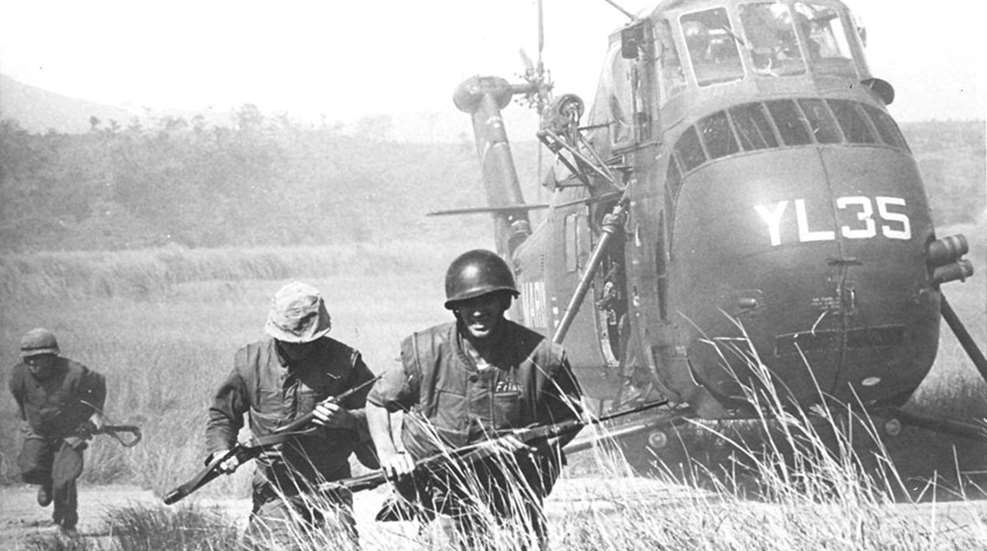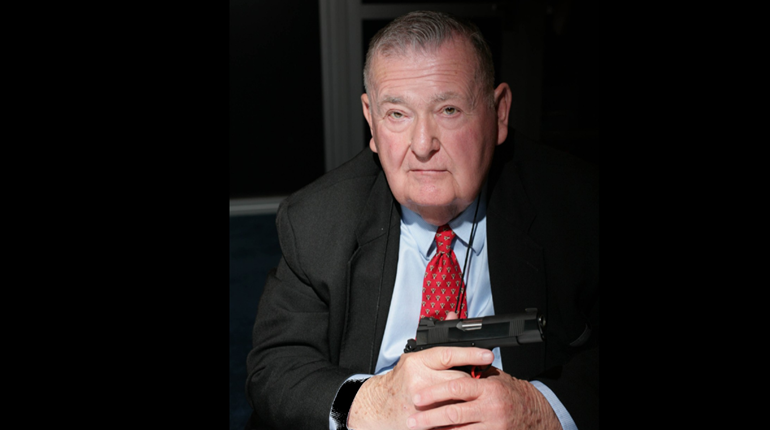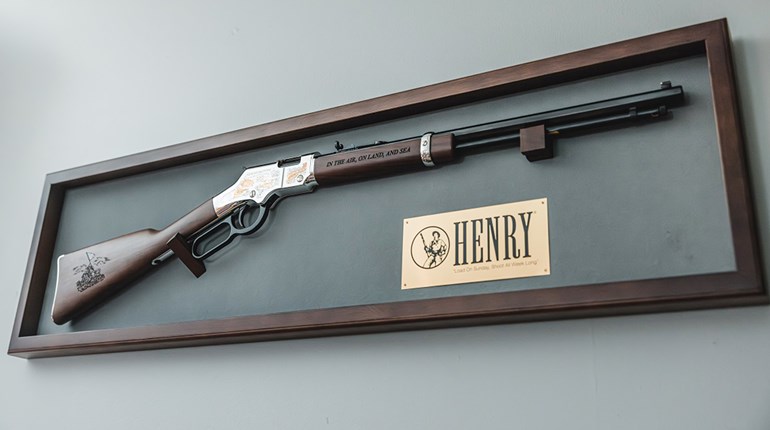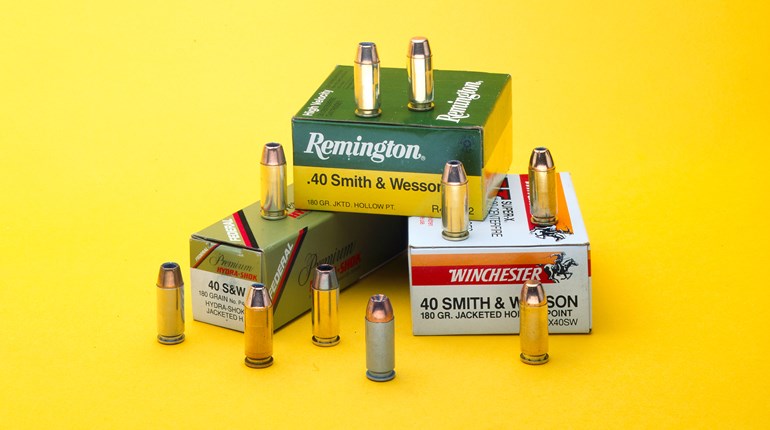
Marines disembark from an H-34 helicopter. Choppers changed the face of combat by providing a fast, new way to move troops and gear to hotspots, provide fire support and evacuate wounded.
Very quickly, these innovative airmen cut a smaller port in the left side of the troop compartment and mounted another of the light 7.62 NATO machine guns. As the use of helicopters as troop carriers grew frequent, those machine guns were often fired in anger. The Viet Cong were quick to adjust and devilishly clever in predicting where the Marine choppers would land.
These were Marines of the same stripe as those who made history in Korea and the many battles of the Pacific in World War II. Different only in their military skills, the Marines of the early ’60s were every bit as courageous and driven as those of days past. The helicopter made a difference, giving military operations a completely new character. Small helicopters had been around since the late 1940s, but they were capable of lifting only light loads. The Marine Corps experimented with several bigger choppers and even managed the first helilift of an infantry battalion in the last part of the Korean War.
The H-34 helicopter became a serious assault vehicle. Ten years between Korea and Vietnam saw the organization of the Marine infantry battalion change. Because of the weight-bearing limitations of these choppers, every last piece of equipment had to be capable of being carried in or slung under the H-34 chopper. We even saw the development of special U.S. Navy ships called LPHs (for Landing Platform Helicopter). Helicopter mobility, particularly from well-equipped ships, did not just add to the fighting ability of the ground-pounding Marines—it multiplied it. By mid-1965, the first helicopter squadrons were grizzled veterans with many combat assaults to their credit. One of them drew a great deal of attention.
One of the early squadrons to make it into the war was Medium Helicopter Squadron 163. Their identification was the large letters “YP” painted on the nose of each of their choppers. In the military phonetic alphabet, YP was known as Yankee Papa and old number 13 would be remembered for a mission described in Life magazine. War correspondent Larry Burrows was in the machine that ferried ARVN soldiers into a hot landing zone and took heavy VC fire. His photos and text were published as “One Ride with Yankee Papa 13.” The story was one of the very first to describe the realities of the land war in Asia.
Burrows, a legendary and prize-winning photojournalist, took his gripping pictures on March 31, 1965 and his story was published in Life’s April 16 issue. Marine aircrews of HMM 163 continued to fly many types of missions in the following weeks and months. By mid-1965, it was much respected, not only for the members’ competence as aviators, but also for their willingness to do whatever was needed by the infantry Marines who rode in their troop compartments.
Assigned to duty aboard an LPH—the USS Iwo Jima—with a battalion of infantry from the 7th Marine Regiment, their mission was to sail around offshore until enemy action anywhere in Vietnam required their help. Eventually the situation at the big logistic base of Qui Nohn required just that.
A port city on the eastern coast of Vietnam, Qui Nohn was critical to supplying the rapidly growing American effort in the country. When intelligence reported sizable enemy units moving toward the harbor, it was time to act. The infantry battalion was deployed ashore by helicopter, with two companies taking up positions on a steep ridge overlooking the harbor. This movement happened on July 1, 1965. There was no contact with the enemy for several days. The helicopter squadron continued to support the troops ashore.
Five days after landing, the troops settled in for another night of anxious waiting in their fighting positions. Coastal fog rolled in from the ocean—fog so thick that you couldn’t see your hand in front of your face. It was definitely not flying weather for the helicopters, but one Marine got hit in the upper torso with a rifle shot and needed immediate surgery. His only hope was a helicopter evacuation back to the Iwo Jima’s operating room. They couldn’t fly, but Marines never leave their wounded behind.
Within a few minutes an H-34 helicopter arrived overhead and looked down on a solid blanket of heavy grey fog about 30 feet thick. On the ground and in a very small landing zone, Lt. Rich Hill of the infantry rifle company talked to the pilot of the chopper and worked out a plan. Using illumination grenades dropped into three hastily dug shallow pits, he marked three points of very bright light that could be seen through the fog. The incredibly skillful pilot could barely see where he was going, but lowered his aircraft straight down until he touched down and took the wounded Marine aboard. From the ground, the helicopter appeared through the fog like some mystical Valkyrie. Although he was on the operating table within minutes, the wounded Marine did not survive.
The H-34 helicopter crews carried many other Marines into many other tight spots over the next few years. It was not uncommon to see equally courageous acts on their part when they had to get their brothers out. Brave men among all who go forth with fightin’ iron.





































